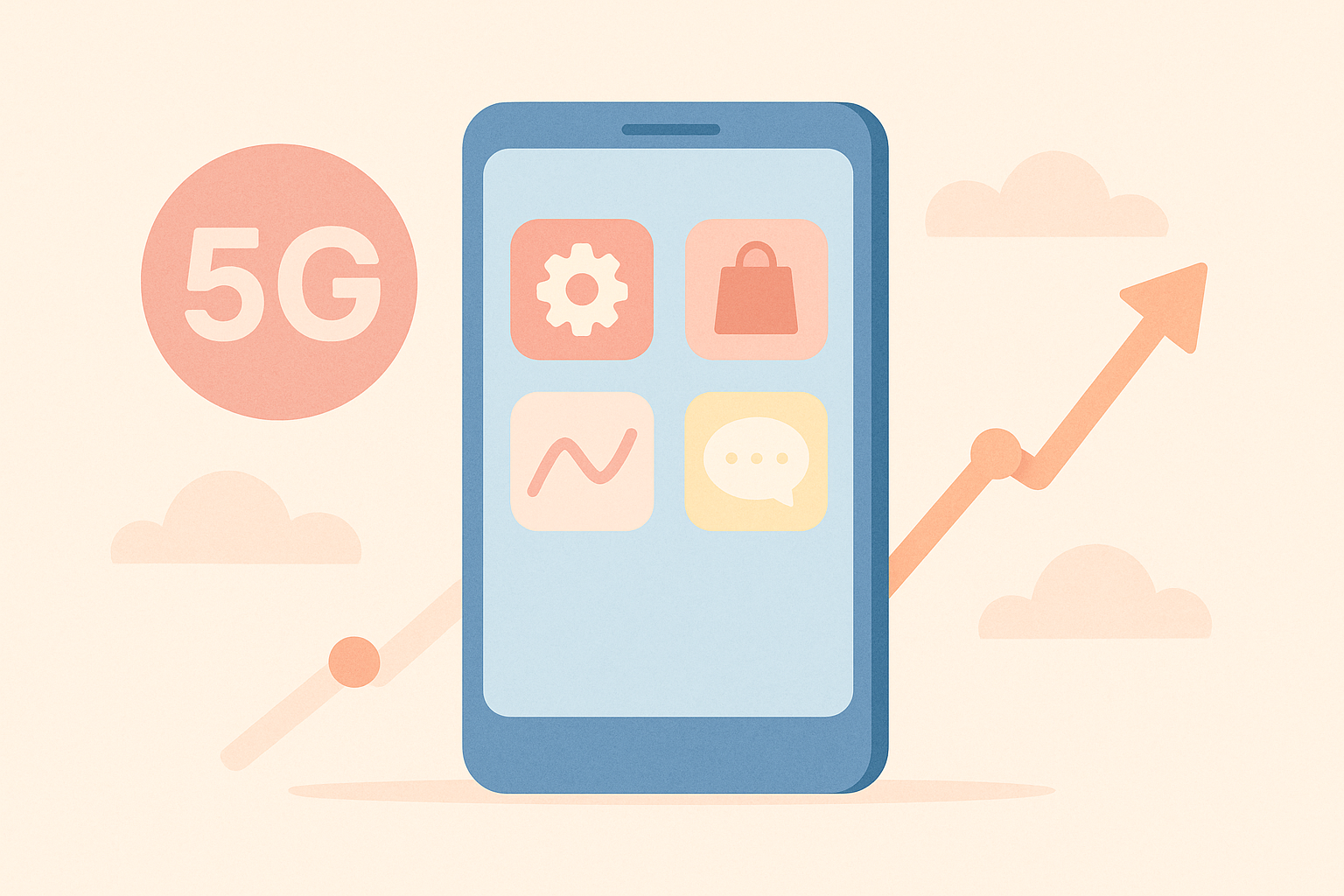The arrival of 5G technology is revolutionizing how users interact with mobile applications. With faster speeds, lower latency, and enhanced connectivity, 5G is not just an upgrade to 4G—it’s a complete transformation of the digital experience. As mobile developers and tech companies race to harness its power, user expectations are evolving at lightning speed.

1. What Makes 5G So Transformative?
5G, the fifth generation of mobile networks, offers speeds up to 100 times faster than 4G. More importantly, it reduces latency to as low as one millisecond, enabling real-time data transmission. This opens up opportunities for innovation in areas like augmented reality (AR), virtual reality (VR), Internet of Things (IoT), and cloud-based gaming.
With 5G, users can stream 4K videos instantly, download gigabytes of data in seconds, and experience smoother real-time collaboration tools. This means that the bar for mobile app performance is now set higher than ever.
2. The New Standard for App Performance
Speed and responsiveness are now non-negotiable. Users accustomed to near-instant loading times expect apps to deliver seamless interactions. Lagging or crashing apps are no longer tolerated. Developers must now optimize every component—from APIs to front-end interfaces—to take full advantage of 5G’s potential.
Moreover, 5G encourages richer in-app experiences. Developers can now embed more complex graphics, animations, and AI-driven personalization features without compromising performance. The result: apps that feel smarter, faster, and more immersive.
3. How 5G Fuels Emerging App Categories
Beyond performance, 5G is enabling entirely new categories of mobile applications:
- Augmented & Virtual Reality (AR/VR): Real-time rendering and ultra-low latency make immersive experiences more accessible on mobile devices. This impacts industries like gaming, education, and e-commerce.
- Cloud Gaming: Platforms like Google Stadia demonstrate how 5G can eliminate the need for high-end hardware by streaming games from the cloud with zero lag.
- Smart IoT Apps: 5G enables faster and more stable communication between connected devices, enhancing automation, home control, and wearables.
- Telemedicine: Video consultations and health monitoring apps benefit from 5G’s stable and real-time data transfer capabilities.
4. Changing User Expectations in the 5G Era
As users begin to experience the capabilities of 5G, their expectations evolve in several key ways:
a. Instant Gratification
Users expect apps to load instantly, with zero buffering or delay. A single second of delay can drastically impact engagement and conversions. This means developers must optimize APIs, compress images efficiently, and ensure backend services are ready for 5G speeds.
b. Immersive Interactions
5G allows for high-quality AR filters, interactive videos, and real-time multiplayer experiences. Users now anticipate apps that blend digital content with the real world. Retail apps, for instance, are integrating AR try-on experiences to help users visualize products before purchasing.
c. Seamless Cloud Integration
With ultra-fast connectivity, apps no longer need to store large amounts of data locally. Instead, cloud-based processing becomes the norm, leading to smaller app sizes and faster updates. This not only improves user experience but also makes maintenance easier for developers.
d. Enhanced Security and Privacy Expectations
While 5G opens new possibilities, it also introduces new security challenges. Users expect faster yet more secure data handling. Developers must ensure encryption, secure API endpoints, and compliance with international data protection standards.
5. 5G and the Future of Mobile UX/UI Design
5G is influencing how designers think about user interfaces. The new connectivity standard allows for real-time animations, instant feedback, and dynamic interfaces that respond faster to user behavior. Mobile UI/UX designers can now craft experiences that feel alive and interactive, similar to desktop or console-grade applications.
Designers are also leveraging 5G’s capabilities to support more visual storytelling. High-resolution video backgrounds, 3D models, and live data visualization are now practical options without slowing down performance.
6. Opportunities for App Developers
For mobile app developers, 5G represents a massive opportunity to innovate:
- Real-time collaboration tools – Build apps that allow multiple users to work or play together seamlessly.
- Edge computing integration – Combine 5G with edge computing for even faster data processing.
- AI-driven applications – Use 5G to support instant AI inference and recommendations directly from the cloud.
- Hyper-personalization – Leverage faster data analytics to tailor user experiences dynamically.
7. Business Implications of 5G-Ready Apps
Businesses that adapt to 5G early can gain a competitive advantage. Apps optimized for 5G can deliver superior performance, boost customer satisfaction, and increase retention rates. On the other hand, those that ignore the shift may lose users to faster, more responsive competitors.
From e-commerce to fintech, every industry must rethink app architecture and infrastructure. The future of mobile lies in how well companies adapt to the demands of a 5G-driven ecosystem.
8. Conclusion
The rise of 5G is more than just a technological leap—it’s a shift in user mindset. Users now expect mobile apps that are instant, intelligent, and immersive. Developers must evolve their strategies, optimize backend systems, and design experiences that truly leverage 5G’s full potential.
In short, 5G is redefining what users expect from mobile apps. The future belongs to those who can keep up with that expectation and turn connectivity into creativity.
Explore more about how 5G is transforming industries at Qualcomm’s 5G Innovation Center.

